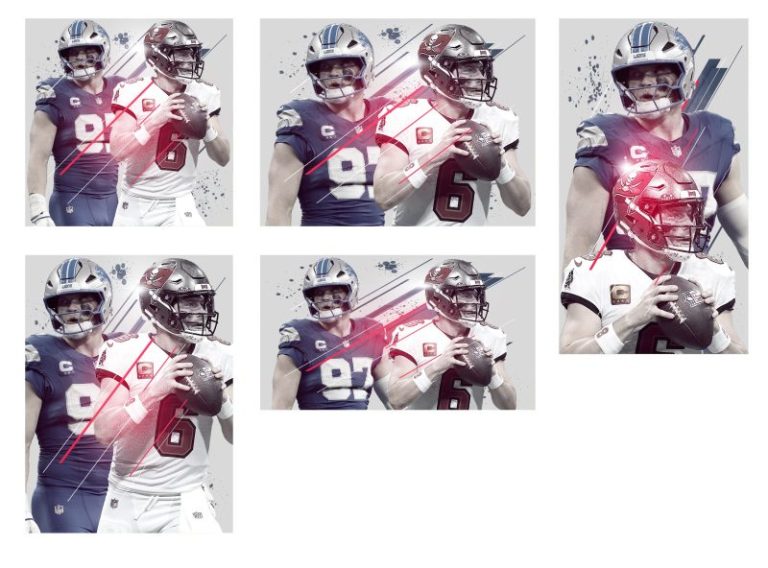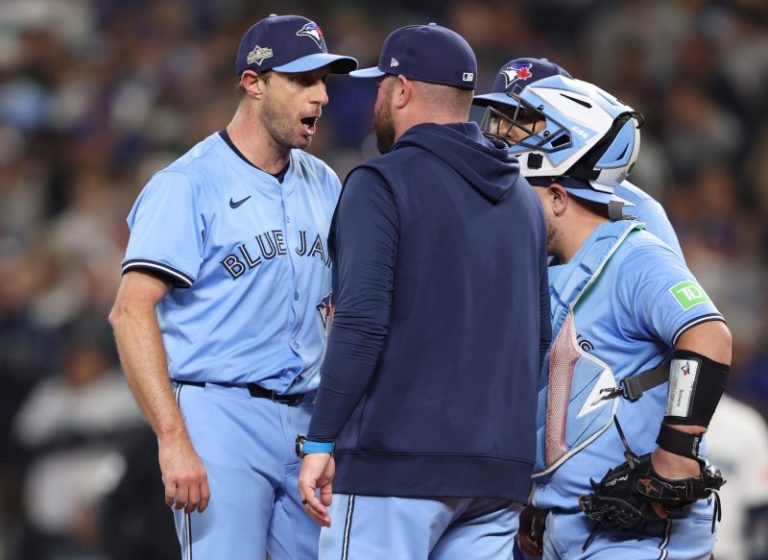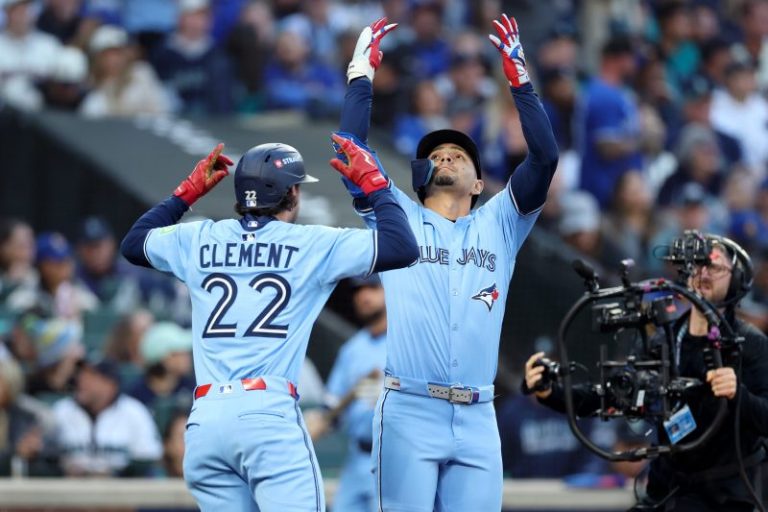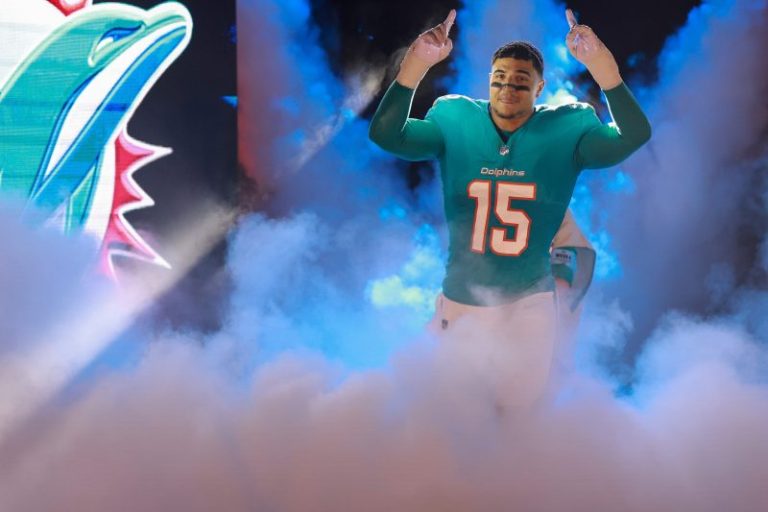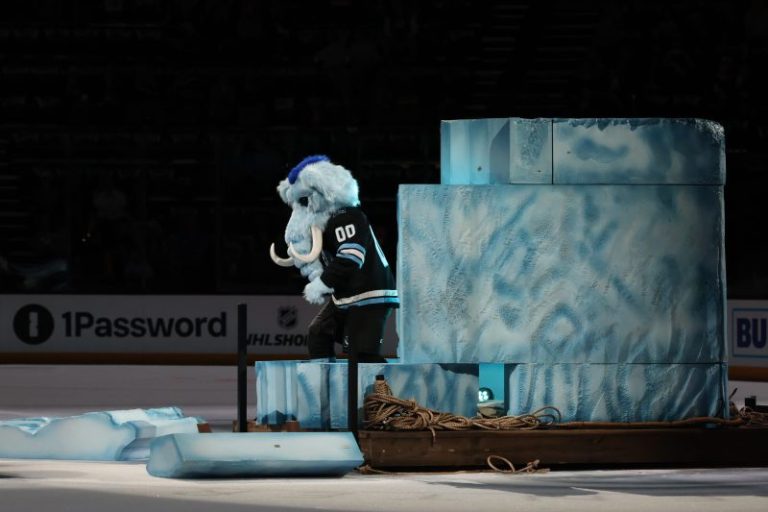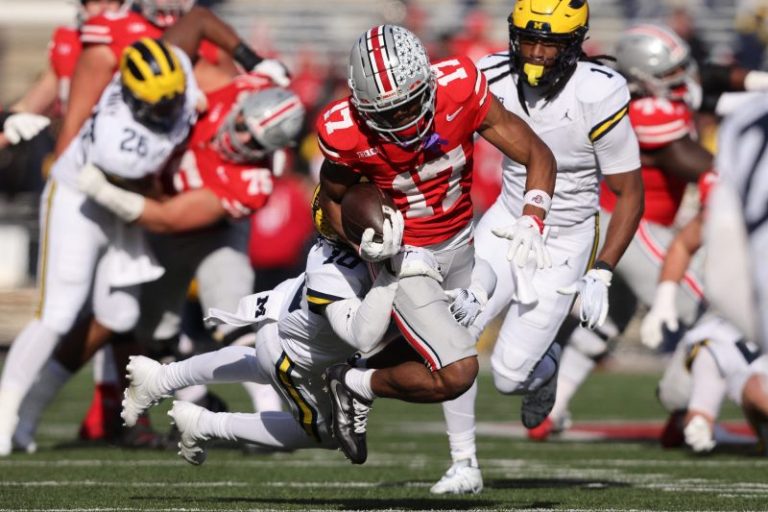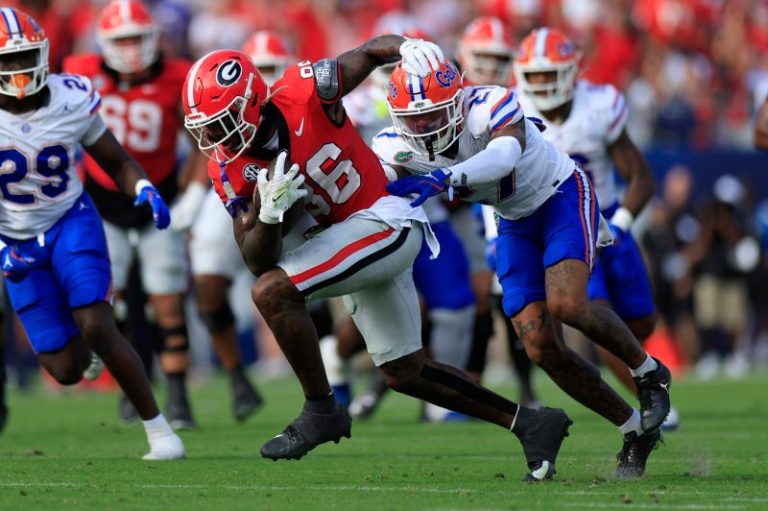- The NFL could see plenty more trade action before the Nov. 4 deadline.
- Several notable veterans could be on the block, including multiple players from the Saints, Titans and Browns.
- Trey Hendrickson, Alvin Kamara and Jeffery Simmons might be long shots to be dealt, but they should still spark plenty of interest.
Determining which players are available ahead of the NFL trade deadline isn’t always a cut-and-dried process.
Look no further than last week’s deal that sent Joe Flacco from the Cleveland Browns to the Cincinnati Bengals for evidence of how fluid things can be.
‘The Joe (Flacco) trade took us by surprise,’ Browns coach Kevin Stefanski said after the deal. ‘Not something we saw coming. They called us … They wanted Joe.’
If only other teams had it so easy in prying their players of choice away from their current organizations.
With the Nov. 4 deadline looming, more deals will assuredly come together in short order. But even with a few teams positioned to become sellers as their seasons continue to sink, there’s been little clarity about which figures are actually on the block.
These 25 players, however, loom as perhaps the most notable potential trade candidates over the next 20 days:
2025 NFL trade deadline candidates who could move
QB Kirk Cousins, Atlanta Falcons
The four-time Pro Bowl passer might not be able to grab a ticket out of Atlanta until the offseason considering the scarcity of midseason quarterback deals. Then again, who could have foreseen Flacco starting for a division rival just a few weeks after opening the season as the Browns’ starter? Pulling this off would probably entail a comparably calamitous long-term quarterback injury for another contender – one without a viable plan – still harboring hopes of staying afloat. The cost, too, could be considerable given the prorated portion of the $27.5 million in base salary any acquiring team would need to shell out, in addition to the draft capital necessary to entice the Falcons into parting with their veteran backup. If those elements align, maybe there would be sufficient incentive for Cousins to waive his no-trade clause? Don’t count on any movement, but hold off on fully ruling it out.
QBs Russell Wilson and Jameis Winston, New York Giants
Big Blue didn’t rush out to move either veteran signal-caller following Wilson’s demotion after three weeks. And with Jaxson Dart yet to rein in his reckless abandon as a runner, it’s understandable that the Giants might not be actively looking to move a backup. But perhaps this situation is analogous to the Browns moving Flacco in that the right offer could prompt a change of plans. Both passers are probably a bit more volatile than some teams might tolerate behind center, but there’s little question they can more comfortably attack defenses downfield than the typical second-stringer.
RB Breece Hall, New York Jets
He stirred plenty of intrigue with his Instagram caption Monday that ended with ‘#Free20.’ No one could fault the fourth-year back for seeking greener pastures – or at least some more running room, given that he’s faced stacked boxes on 25% of his carries – in his contract year. But will an 0-6 Jets team clawing for some level of competence be willing to send off its lead backfield asset at a time when backup Braelon Allen remains shelved for the foreseeable future with a knee injury? If Hall truly wants out, coach Aaron Glenn and GM Darren Mougey might be wise to take a page from Pittsburgh Steelers coach Mike Tomlin, who once stated, ‘We want volunteers, not hostages.’ Hall likely would be the most enticing option at running back if available, and several playoff-caliber outfits could stand to give their ground game a boost.
RB Alvin Kamara, New Orleans Saints
The five-time Pro Bowler probably isn’t headed anywhere, as the 30-year-old made clear when he signed an extension in 2024 that he wants to retire in New Orleans. Still, he has to be mentioned here given that his name will likely hang around until the deadline passes. Kamara’s 3.8 yards per carry marks the second-lowest average of his career, yet he continues to be a matchup problem in the passing game with 22 catches on the season. If both sides become more amenable to a separation, he’d unquestionably be one of the buzziest candidates on the market.
WR Jakobi Meyers, Las Vegas Raiders
The Silver and Black didn’t budge when Meyers made a trade request this summer amid dissatisfaction with his contract. Things might be looking a little bit different now, however, after the Raiders’ 2-4 start, which has featured a litany of offensive issues. Meyers’ production has been on the downswing since the opener, so moving him might equate to selling low. But the receiver offerings around the league aren’t particularly inspiring, so the seven-year veteran could be the starting point for any passing attack in search of a bit more stability.
WRs Chris Olave, Rashid Shaheed and Brandin Cooks, Saints
Speed surely isn’t the issue with New Orleans’ aerial attack, with Olave and Shaheed among the league’s most formidable field-stretchers. But even with Spencer Rattler showing some promise while fighting against some unfavorable conditions, first-year coach Kellen Moore’s offense has yet to take off. New Orleans might be reticent to deal Olave given that the team in April exercised his fully guaranteed fifth-year option of nearly $15.5 million, which might be a sticking point for other teams wary of his concussion history. Shaheed is probably the more straightforward option as a complementary vertical threat, while the 32-year-old Cooks might lack the upside for teams to overlook the guaranteed money he’s still set to be due in 2026. But if New Orleans is committed to flipping its roster, it probably shouldn’t stand pat.
TE Mark Andrews, Baltimore Ravens
Seems unlikely that Baltimore would retreat to seller status until its hopes of a long-shot resurgence are dashed. But if things aren’t looking up by the time the Ravens face the Miami Dolphins in a ‘Thursday Night Football’ tilt five days prior to the deadline, it might be time to consider sending Andrews on his way. The three-time Pro Bowler’s name has been tossed around in trade rumors since shortly after his drop in the AFC championship game, with plenty of uncertainty about how the final year of his contract would play out. Ravens general manager Eric DeCosta deflected any talk of a move in the spring, saying ‘we’re in the business of keeping as many great players as we can.’ But if the Ravens can’t pull up from their nosedive after the upcoming bye, there’s little point in clinging onto the veteran, who could get a jump start on starting a second chapter elsewhere.
TE David Njoku, Cleveland Browns
Cleveland is giving plenty of indications that it’s already training its focus on 2026, when it will have two first-round picks and will be poised to finally move on from the ill-fated Deshaun Watson era. As such, outside of Myles Garrett, Denzel Ward and the members of a promising rookie class, no piece should be off the table in trade talks. Njoku suffered a knee injury in Sunday’s loss to the Pittsburgh Steelers, but he’s been an asset to a floundering unit when healthy, ranking second on the team in catches (23) and third in receiving yards (223). Still, third-rounder Harold Fannin Jr. is both the present and future here, and a 29-year-old target due to hit the market this offseason might best assist the Browns this season by returning more draft capital.
TE Chig Okonkwo, Tennessee Titans
He’s one of several Titans who could be on the block following the reset that appears imminent after Brian Callahan’s firing. Okonkwo leads the Titans in receptions with 23 while ranking second in receiving yards (218), his production reflecting his value as a safety valve for No. 1 pick Cam Ward. But he’s in the final year of his deal, and fourth-round rookie Gunnar Helm is waiting in the wings. While Okonkwo won’t fetch a major return, he could be attractive to a team looking to round out its receiving corps with a versatile piece. He’s also a sizable threat with the ball in his hands, with his 159 yards after the catch ranking fifth among all tight ends.
Gs Wyatt Teller and Joel Bitonio, Browns
Cleveland’s decrepit offense doesn’t have many pieces that would spark interest, but perhaps these two accomplished veterans could catch the eye of teams looking to fortify their fronts. Teller, a three-time Pro Bowl selection, and Bitonio, a two-time All-Pro, can help hold down the interior while also providing some veteran savvy.
G Kevin Zeitler, Titans
A 35-year-old blocker who’s already been dinged up this year might not seem like much of a draw. But Zeitler was one of football’s best guards not even a full year ago, and he also earned a Pro Bowl berth in 2023. The Titans’ persistent troubles up front shouldn’t fall on him, though maybe depriving Ward of another capable blocker – even one on a one-year contract – might be reason to dissuade Tennessee from a deal. But his skills could be put to greater use elsewhere.
DE Trey Hendrickson, Cincinnati Bengals
Any decision to move him is probably at least a few weeks off, as Cincinnati looks focused on trying to save a rapidly spiraling season rather than punting to 2026. If the four-game losing skid keeps extending and the season reaches a breaking point, however, it might be best for the Bengals to examine what returns they could secure now for the NFL’s reigning sack king instead of playing the compensatory pick game. Bartering for Hendrickson could be tricky given that he’s made clear he expects a hefty long-term contract after the season, but the Bengals should have no shortage of callers if they signal that they’re willing to listen on a deal.
DE Carl Granderson, Saints
He’s one of the few legitimate building blocks on a Saints roster starved for talent. Still, with several of the league’s top teams standing to benefit greatly from a boost on the edge, his greatest value to New Orleans might be in helping kick-start the rebuild with what he could return in a trade. Granderson has 4 1/2 sacks for an underwhelming defense, and his work as a run-stopper should make him an attractive option for defenses demanding a well-rounded threat along the front.
DT Jeffery Simmons, Titans
Trading the roster’s lone elite player might be a non-starter for general manager Mike Borgonzi, especially after Simmons held the team accountable for what he called ‘one of our worst weeks of practice’ prior to Brian Callahan’s firing. But if you want to supercharge a reset, this is how you do it. Simmons is operating at a Defensive Player of the Year level, taking his play to new heights after long ago establishing himself as one of the league’s most disruptive interior forces. Nothing suggests any movement here, but teams have to take a shot.
OLBs Bradley Chubb and Jaelan Phillips, Miami Dolphins
Injuries have prevented Chubb and Phillips from seeing as much time together on the field as Miami initially envisioned for its talented pair of pass rushers. Now, it might be time to break the duo up. Phillips is set to become a free agent, and the Dolphins could help their cause in next year’s draft by moving him to the highest bidder. Chubb, who leads the Dolphins with four sacks, is signed through 2027, but he carries no guaranteed money on his deal past this season.
OLBs Arden Key, Dre’Mont Jones and Jihad Ward, Titans
You might not be able to tell from the team’s sack total (nine), but there’s some solid edge-rusher talent in Tennessee. Key has impressive credentials when it comes to corralling quarterbacks, with at least six sacks in three of his last four seasons. Jones is attempting to boost his value after an uninspiring two-year stint with the Seattle Seahawks. And Ward has come on strong as an inside-outside threat capable of setting the edge and being a force against opposing rushing attacks. All should be available as rentals on expiring deals to potential contenders, as it’s probably time for Tennessee to look to the future at this spot with second-rounder Oluwafemi Oladejo.
CB Riq Woolen, Seattle Seahawks
At a time when many of his peers are flourishing on the Seahawks’ swarming defense, Woolen has had trouble cementing his status in Mike Macdonald’s complex system. He missed Sunday’s game against the Jacksonville Jaguars with a concussion, but the larger problem has been his erratic play, giving up a 113.6 passer rating so far this season as the nearest defender in coverage, according to Nex Gen Stats. Still, teams seldom find blazing-fast cornerbacks who measure in at 6-foot-4 and 205 pounds, and such players are even harder to obtain in the middle of the season. He’s high risk for a rental, and Seattle might not be inclined to shed parts without receiving something in return as it loads up for a potential playoff run. But a fresh slate might be best for both sides if there’s a team willing to pay the proper price.
CB Roger McCreary, Titans
Only fitting to wrap up this exercise with one last option from the Titans. McCreary might be one of the few inherited pieces worth keeping around, but he’s on the final year of his rookie contract. If the front office has any reservations about extending him – amid a nickel market that’s ticking up, it’s time to recoup some value. Cornerbacks, even those who occupy the slot, can be hard to come by at the trade deadline, so he could be an attractive piece for a contender needing to account for a hole on the back end.
This post appeared first on USA TODAY


